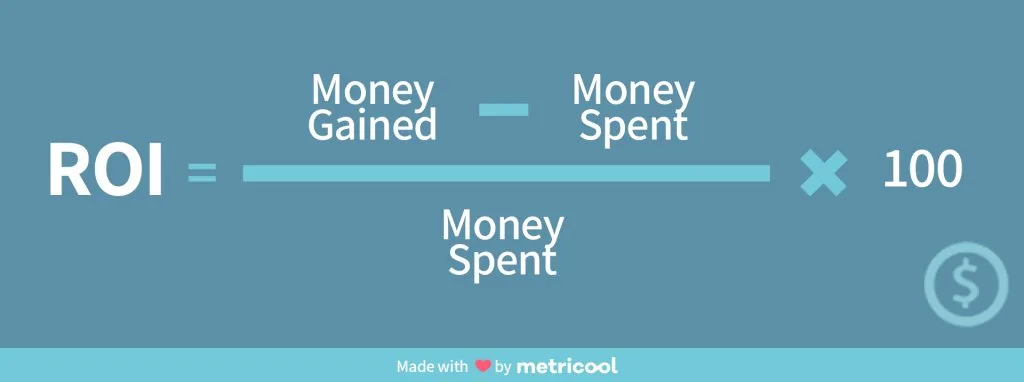Social Media ROI: What It Is and How to Measure It

Social media is now part of everyday business. It’s where brands connect with customers, grow awareness, and drive sales. The challenge is figuring out if all that effort is really paying off. That’s where social media ROI, or Return on Investment, becomes important. This guide walks through what ROI means in social media marketing, why it matters, how to calculate it, and what you can do to improve results.
What is ROI in Social Media Marketing?
Social media ROI (Return on Investment) measures how effective and profitable your social media marketing activities are. It calculates the return you gain compared to the time, money, and resources you invest in your channels.
In other words, it helps you see whether your campaigns and daily activity on social media are driving real value for your brand.
Why Measuring Social Media ROI Matters
Almost every brand has a presence on social media today. But with the competition for attention, both organic and paid, it’s not always easy to know if the time and resources are worth it. ROI gives you a way to measure value and impact with actual numbers.
By tracking ROI, you can see if your investment in social media creates positive returns or if it is simply draining resources. This knowledge helps you make smarter choices about where to spend your budget and how to align your social media goals with your overall business strategy.
How Social Media ROI Shapes Your Marketing Strategy
Social media ROI isn’t just numbers. It shows what’s working, from audience engagement to turning followers into customers. Understanding it helps you focus your time, improve content, and see how social media drives real results.
Engagement
Engagement shows how your audience interacts with your content. Likes, shares, comments, and mentions all reveal whether people connect with your posts. These numbers can guide you toward the type of content that works best and highlight what needs adjusting.
By following engagement data, you can:
- Spot the content formats your audience prefers
- Refine your content plan to improve interaction
- Strengthen brand awareness through posts that spark conversation
Short-form video is especially powerful here. Ultra-micro clips under 15 seconds dominate platforms like TikTok, Instagram Reels, and YouTube Shorts. These formats match shrinking attention spans, generate higher engagement rates, and often lead to more shares, boosting ROI through increased reach and quicker conversions.
Reach
Reach tells you how far your content travels. This includes impressions, reach rate, and shares. These numbers show how widely your posts are being distributed and where there’s room to grow. AI tools now forecast audience behavior, allowing businesses to adjust distribution strategies in real time and reach new customers at the right moment.
Tracking reach helps you:
- Improve how and where you share content
- Grow your audience by targeting new groups
- Make content more visible through promotions and advertising
Leads
Social media is an effective tool for attracting potential customers. Measuring leads shows which platforms and content types bring people into your sales funnel. This helps you adjust your approach and increase conversion opportunities.
The benefits of tracking leads include:
- Discovering which channels generate the most interest
- Improving lead generation tactics
- Making it easier for potential customers to move through the funnel and convert
Conversions
Conversions measure the actions people take after engaging with your content, such as buying a product, signing up for a newsletter, or filling out a form. These numbers directly link social media to your revenue.
Social commerce has made this process even smoother. With embedded shopping and one-click checkouts inside platforms, customers no longer need to leave the app to buy. This shift has increased average order value and shortened the funnel, raising ROI significantly.
By tracking conversions, you can:
- Strengthen the paths that guide users toward action
- Provide a better customer experience with relevant content
- Boost sales and revenue through targeted campaigns
How to Calculate Social Media ROI
The exact way you calculate ROI depends on your company’s priorities. For some, the main goal is revenue. For others, it could be brand awareness or customer loyalty.
Here’s a step-by-step breakdown:
1. Set Clear Goals and Objectives
Before diving into campaigns, make sure your social media goals tie directly to your overall business priorities. Clear objectives help shape your strategy, guiding what content to create, which channels to focus on, and how to measure success.
- Specific: Define exactly what you want to achieve.
- Measurable: Pick metrics that show progress, like follower growth, clicks, or conversions.
- Achievable: Set targets that are realistic, given your resources and audience.
- Relevant: Ensure your goals support broader business objectives.
- Time-bound: Give yourself a deadline to track progress and stay accountable.
With SMART goals in place, you’ll have a clear picture of success and a roadmap for how to get there.
2. Track KPIs
Once your goals are clear, select the key performance indicators that will show whether you are moving in the right direction. These indicators should reflect the outcomes that matter most for your brand and audience. Common KPIs include:
- Engagement: likes, shares, comments, mentions, and deeper engagement measures such as video watch time or interaction duration
- Reach and Impressions: how far your content spreads and how many people see it
- Leads: potential customers who show interest in your products or services
- Conversions: actions such as purchases, sign-ups, or completed forms.
You can also track things like community engagement, interactions with user-generated content, and in-app social commerce activity. The key is to track consistently, so you can spot trends, see what works, and adjust your strategy to improve results.
3. Calculate Costs
To get a clear ROI picture, include all costs, both direct and indirect. Think about:
- Time your team spends creating content, posting, and monitoring campaigns
- Production costs for videos, images, or other assets
- Subscriptions to management, analytics, or scheduling tools
- Agency or consultant fees
- Salaries, training, and ongoing team expenses
- Overhead like office space or utilities
- Opportunity costs from spending time on social media instead of other marketing activities
Adding everything up gives you a realistic view of how much your social media efforts really cost.
4. Measure Earnings
Look at both financial and non-financial benefits when considering ROI.
Financial benefits:
- Revenue from sales driven by social campaigns
- Cost savings, such as reduced advertising or customer service expenses
Non-financial benefits:
- Increased brand visibility
- Better engagement and customer loyalty
You can measure non-financial benefits in several ways. Surveys and customer feedback show how people feel about your brand. Analytics can track engagement, retention, and sentiment. Social listening captures trends in conversations about your brand. While these benefits aren’t always easy to put into dollars, they help explain the bigger picture of your ROI and show the long-term value of your social media efforts.
The Social Media ROI Formula
ROI = (Earnings – Costs) ÷ Costs × 100
A positive number means your social media is generating value. A negative number means your strategy needs adjustment.

The earnings or value generated from social media can vary from business to business. It can include increased sales, leads, conversions, or cost savings due to effective social media engagement. For example, if your social media campaigns lead to increased sales, that is a valuable outcome. Similarly, if your campaigns help you save money by reducing costs, that is also a valuable outcome.
The costs of social media investment include all expenses associated with executing your social media strategy, both financial and non-financial. This can include:
- Content creation costs
- Employee salaries
- Software and tool subscriptions
- Other resources related to social media activities
Challenges in Measuring Social Media ROI
Calculating social media ROI gives you insight into what’s working, but it’s not always as simple as it sounds. Even experienced marketers can run into roadblocks when trying to turn social interactions into meaningful numbers. When you understand these challenges you can set realistic expectations and approach your measurement more strategically.
Some common hurdles include:
- Putting a dollar value on non-financial metrics like engagement and reach
- Collecting accurate data across platforms with different reporting styles
- Accounting for multiple interactions before a customer converts
How to Improve Social Media ROI
Boosting ROI means balancing cost reduction with higher returns. Here’s what that means:
- Understanding your audience with predictive analytics to deliver personalized content at the right time
- Experimenting with formats, especially short-form videos, and repurposing successful ones across channels
- Adapting quickly to algorithm shifts and platform updates
- Building micro-community relationships by collaborating with trusted creators and influencers
- Integrating commerce, customer support, and education into social channels
- Leveraging UGC for trust and authenticity while lowering production costs
- Regularly monitoring results with advanced dashboards and adjusting strategies based on real-time insights
Social Media ROI with Metricool
Metricool provides tools to track, manage, and improve ROI without guesswork. Beyond helping you schedule posts, it shows the best times to publish for maximum engagement and offers insights to improve your overall social strategy.
Here’s how it can help:
- Analytics: Track engagement, reach, and impressions across platforms in one dashboard
- Audience Insights: See detailed demographics and tailor content more effectively
- Competitor Tracking: Analyze what works for others in your industry and apply it to your strategy
- Content Management: Schedule posts at the best times to connect with your audience
- Ad Management: Run and track ads on Meta, Google, and TikTok, and allocate budget where it performs best
- SmartLinks: Create custom link-in-bio pages to monitor clicks and campaign performance
- Reporting: Generate reports in PDF or PPT that show results clearly to your team or clients
With Metricool, you can measure the true value of your social media activity and keep improving your results over time.

